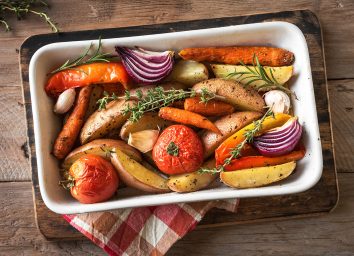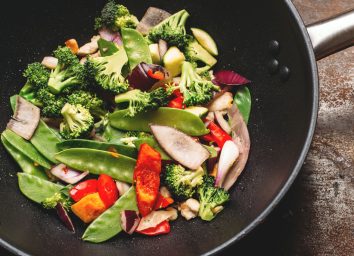The Best Ways To Use Vegetables for Faster Weight Loss
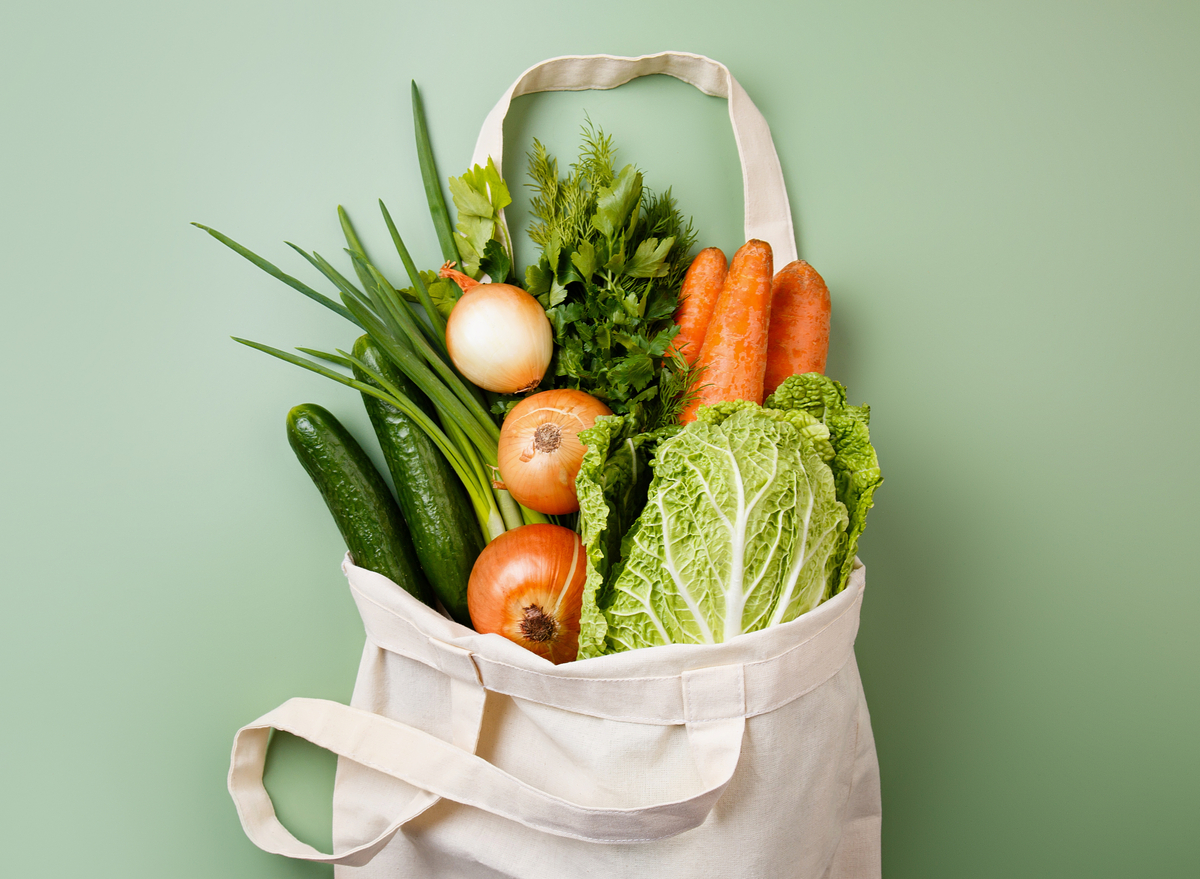
Sorry for hitting you over the head with another zucchini, but one of the best health moves you can make is eating more vegetables and fruits. In 2021, research published in Circulation, the American Heart Association’s journal, named two fruits and three vegetables as the optimal amount of produce to eat every day for longer life. A 13% lower risk of death from all causes is a pretty good incentive to shoot for that five-a-day. And this is the best time of year to get in that habit of targeting that daily quota as farm stands are overflowing with fresh-picked produce at good prices.
Besides longevity, if weight loss is your immediate goal, loading up your plate with vegetables is a no-brainer strategy. “Foods that are naturally rich in water and fiber, like non-starchy vegetables, tend to be foods that give you a lot of stomach satisfaction and blood sugar control for a very low-calorie cost,” says Lon Ben-Asher, MS, RD, a nutritionist at the Pritikin Longevity Center + Spa.
In other words, you can generally eat as much of them as you want or until you’re full. The challenge for most of us is making eating more vegetables a routine, as easy and automatic as grabbing a handful of potato chips from a bowl. Up for a challenge? Then try these prompts to establish veggie-eating habits for weight loss.
Start dinner with a salad
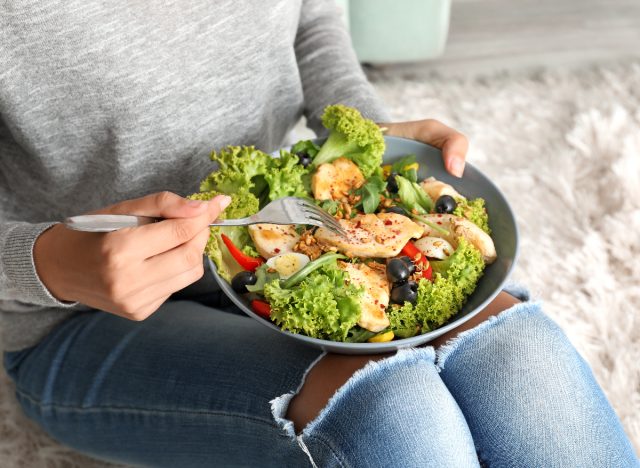
Making a habit of starting your dinner with vegetables could help you lose weight while enriching your body with more healthy nutrients, according to research in the journal Appetite. In an experiment, researchers served salad 20 minutes before the main meal during two meals and at two other meals they served the salad at the same time as the main course. The research revealed that when people ate a low-calorie salad before rather than along with the main course, they ate 23% more vegetables from that salad.
Fill half your dinner plate with vegetables
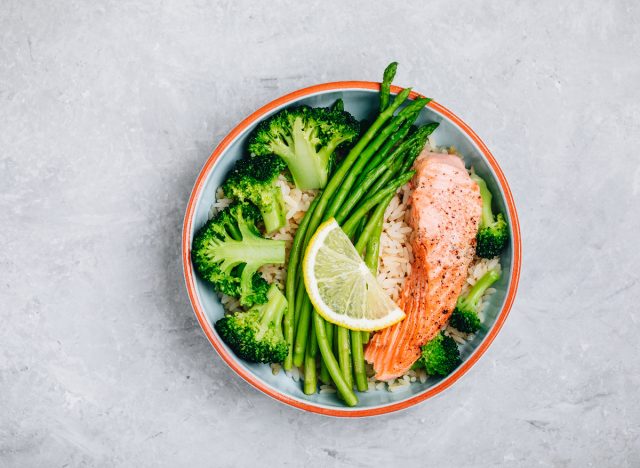
You’ve heard this anecdotal advice a zillion times, but maybe you aren’t aware of the science behind the logic. Penn State researchers tested the practice to see if it worked in a real-world situation, a controlled feeding study of the pickiest veggie eaters on the planet—kids.
When researchers added side dishes of fruit and veggies to a mac-and-cheese meal, kids ate 24% more vegetables and 33% more fruit compared to the control menus. But when researchers added the same amount of fruit and veggies while subtracting 50 grams of the entrée, kids ate 41% more veggies and 38% more fruit than the control meal. In other words, if more of your plate is made up of produce and less of the main, you’ll eat more veggies!
Add flavor to eat more
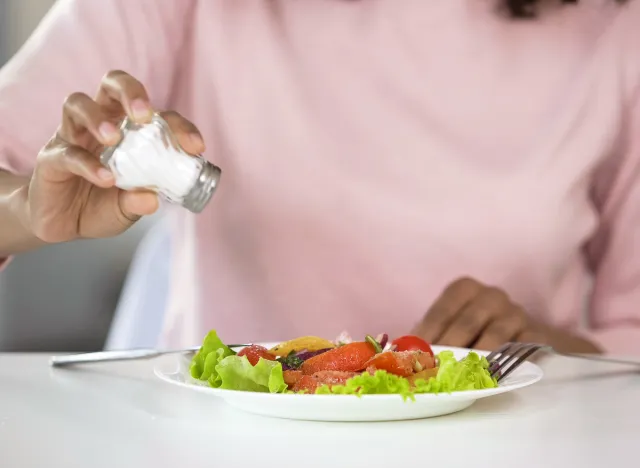
Have you ever sprinkled salt on a cucumber? It’s delicious, and you want to keep sprinkling and crunching, right? Well, there are lots of ways to make vegetables more appealing to your palate beyond sprinkling salt. You just need to get a little creative. “People think ‘veggies means raw carrots and celery sticks’,” says Ilana Muhlstein, MS, RDN, a registered dietitian nutritionist and author of You Can Drop It!: How I Dropped 100 Pounds Enjoying Carbs, Cocktails & Chocolate—and You Can Too! “That’s not what they have to be unless, of course, you love those. They can have sweet and salty flavors. One of my clients microwaves green beans from the bag and then sautés them in a pan with slivered almonds and Everything but The Bagel seasoning.”
Experiment with these spices to find favorites that will become your vegetable prep habits: apple cider vinegar, allspice, basil, black pepper, chives, cinnamon, curry powder, garlic, ginger, mustard, nutmeg, Old Bay, paprika, pimiento, red pepper flakes, rosemary, sage, salsa, savory, thyme and Tabasco sauce.
Elbow out the macaroni
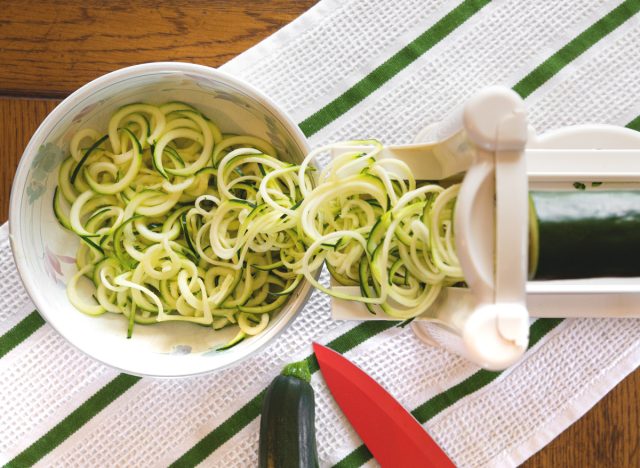
Substitute spiralized zucchini, squash, or cucumber for pasta in your next Italian dinner dish. You’ll save calories and prevent the blood sugar spike that comes from eating spaghetti, macaroni, and other pasta noodles. Or try baked spaghetti squash with your favorite red sauce or a drizzle of extra virgin olive oil.
Punch up a pizza
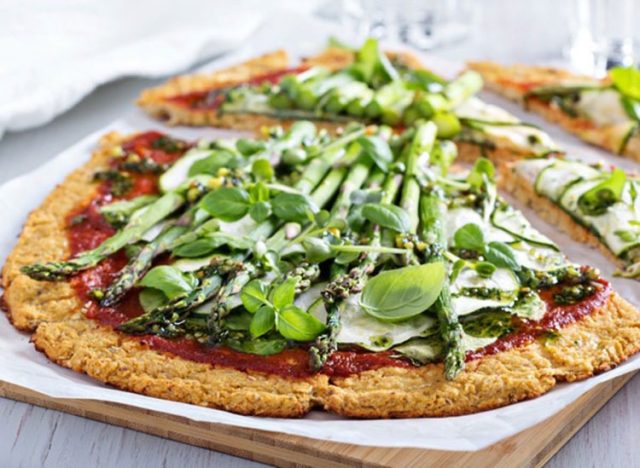
Start with the worst-for-you part of your run-of-the-mill pizza: the crust. Substitute one of the many great cauliflower pizza crusts available at your supermarket. Then build your own veggie pie by topping pizza sauce with half the cheese you would normally use and double the number of veggies. Add red and yellow bell peppers, sliced onions, broccoli, mushrooms, and even eggplant sliced thin.
Plant a garden
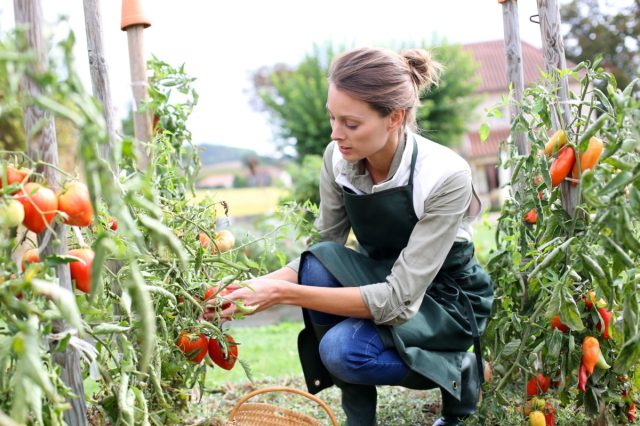
It seems logical that if you grow your vegetables, you’ll be likely to eat what you grow and therefore may consume more vegetables, and studies seem to prove it. Researchers from the University of Washington and the Fred Hutchinson Cancer Research Center analyzed data from a pilot study of community gardening in two Navajo communities. Researchers wanted to see if tending gardens impacted the number of vegetables people ate. The average daily consumption of fruits and vegetables for study participants was 2.5 servings, but researchers found that those who gardened more than four times per month ate about one more serving of fruits and vegetables every day than Navajo Nation members who gardened four or fewer times per month.
Join a CSA
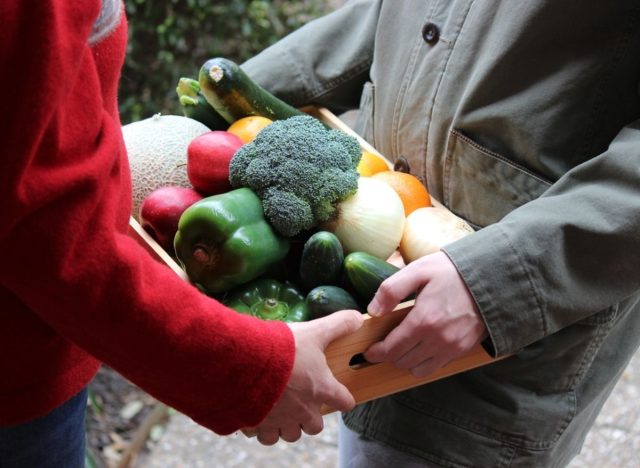
If you don’t like worms or pulling weeds, then let someone else get dirt under their fingernails. Join a Community Supported Agriculture program. That’s where you buy shares of a farm’s seasonal harvest by paying a certain amount in advance and in exchange you receive a variety of fresh-picked vegetables (often organic) every week. Some CSAs also provide fruit, eggs, meats, cut flowers, and other products. CSAs are a great way to support local farmers and get some of the freshest local produce available on a regular basis, which can foster a healthier diet for you and your family.
Studies have shown that participation in a CSA influences vegetable consumption. For example, one Public Health Nutrition study analyzed questionnaires from 151 CSA members and found that, on average, participants reported a higher intake of 11 different vegetables over the course of the season. To find a local CSA in your zip code, visit www.LocalHarvest.org.
Build smoothie volume with vegetables
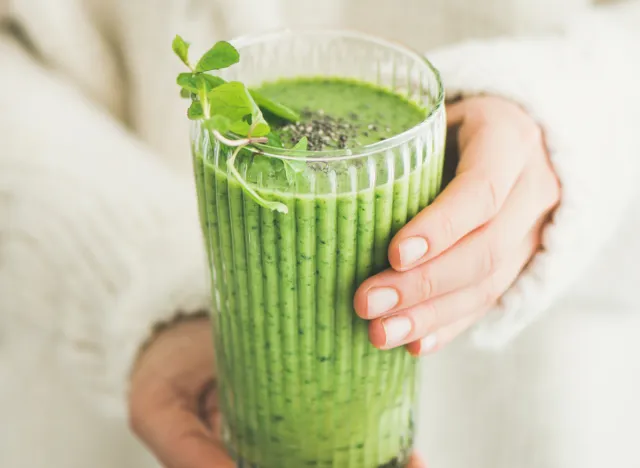
Adding vegetables to smoothies can be a healthy weight-management habit, says Lisa Moskovitz, RD, CEO of NY Nutrition Group, author of The Core 3 Healthy Eating Plan. “I often recommend smoothies as an excellent method to get in several food groups at once. The trick is to add volume by tossing a few handfuls of leafy greens like spinach and kale or other veggies like zucchini cauliflower into a blender. Not only are vegetables high in nutrients and low in calories, but they’re teeming with metabolism-supporting and energizing nutrients.”
Buy transparent zip-top bags
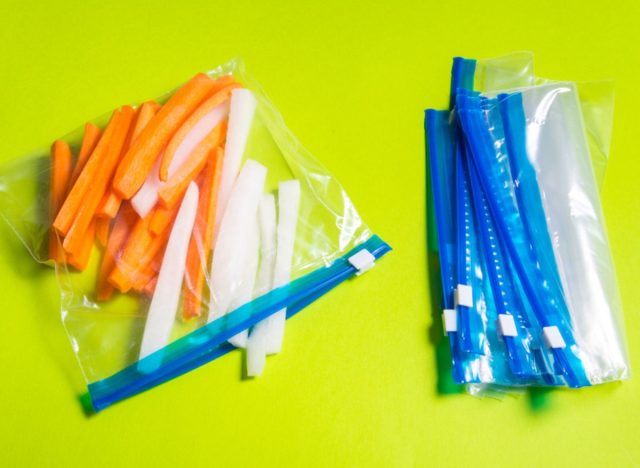
Next, fill them with baby carrots, celery sticks, raw broccoli florets, and fresh-picked green beans. Take those bags and put them in strategic places that you frequent daily: your car, office, the TV room, the kitchen counter. You get the idea. You’ll eat more vegetable snacks if you bump into these bags all throughout your day. You can keep them colder longer by putting them in the freezer the night before.
Make Sunday your day to veg ahead
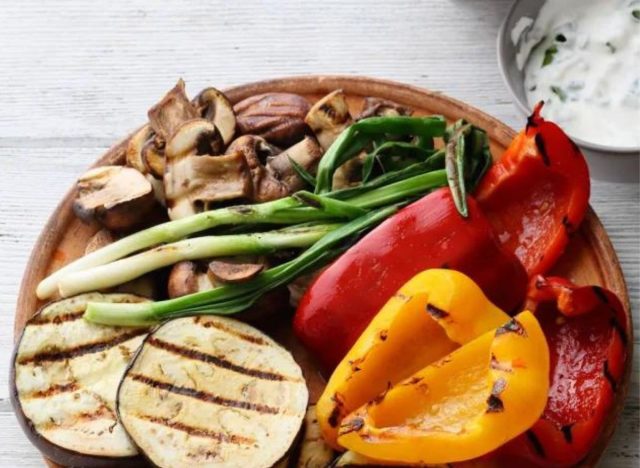
A little pregame on a Sunday afternoon can save you time during the week while packing your lunches with filling fiber and fat-burning nutrition. Simple: cook up a batch of fiber-rich farro and build a large salad by adding roasted vegetables (cauliflower, bell pepper, etc.), arugula, and chickpeas. Make a tahini dressing from ¼ cup of EVOO, 3 Tbsp lemon juice, 3 Tbsp tahini, 2 garlic cloves, minced, and sea salt and ground pepper to taste. You’ll get a least four large salads out of that, perfect work lunches at work. Just portion them into separate plastic tubs.
Add vegetables to breakfast
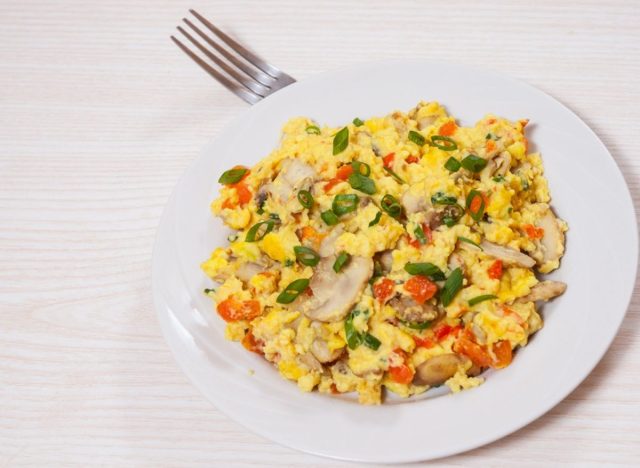
Effectively add a third more vegetables to your daily amount simply by making a vegetable omelet instead of scrambled eggs and bacon. Get creative with your mix-ins: chopped mushrooms, peppers asparagus, onions, broccoli, cauliflower, summer squash, you name it.
Make vegetables the main course
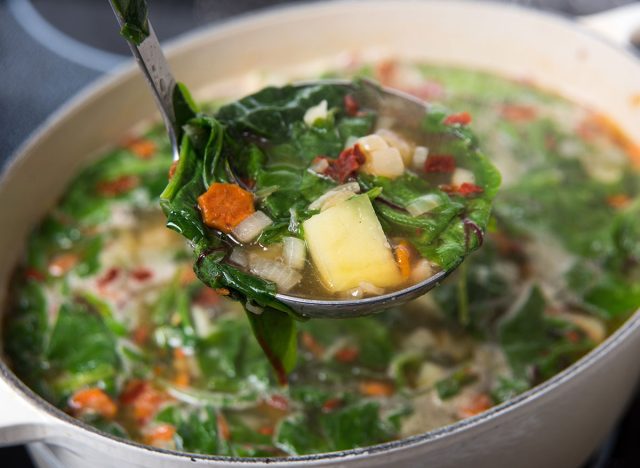
Think you couldn’t survive on an all-vegetable main course meal? You’ve already done it if you’ve had a big bowl of vegetable soup. Soup teeming with vegetables is one of the easiest ways to increase your weekly intake of vegetables. And eating vegetable soup is famous as a weight loss strategy. Studies show that vegetable soup made with clear broth is highly satiating, keeping you full longer so you don’t overconsume calories.
Mix mushrooms into your burgers
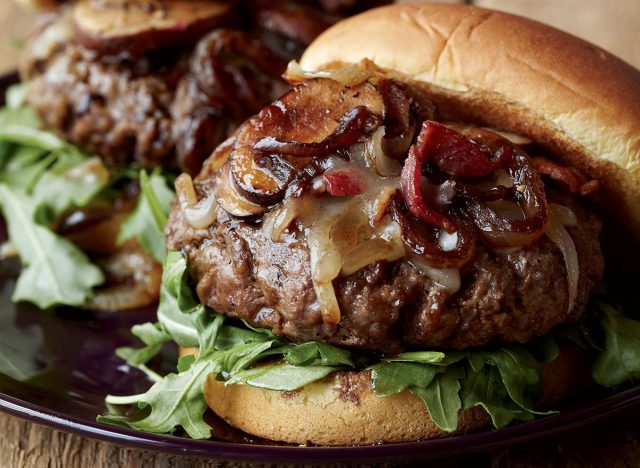
You can effectively reduce the saturated fat content of your hamburgers or meatloaf by mixing in chopped mushrooms and reducing the amount of ground beef you use. Besides the fat and calorie savings, by adding mushrooms (a prebiotic), you are helping to populate your gut with healthy bacteria. Studies have shown that the makeup of the gut microbiota can play a significant role in obesity and weight loss. Plus, mushrooms contain antioxidants and amino acids that protect against the cellular damage that can cause cancer. A 2021 meta-analysis of cancer studies in Advances in Nutrition showed daily mushroom consumption was linked to lowering the risk of cancer by as much as 45%.

